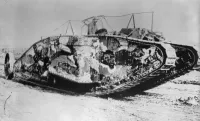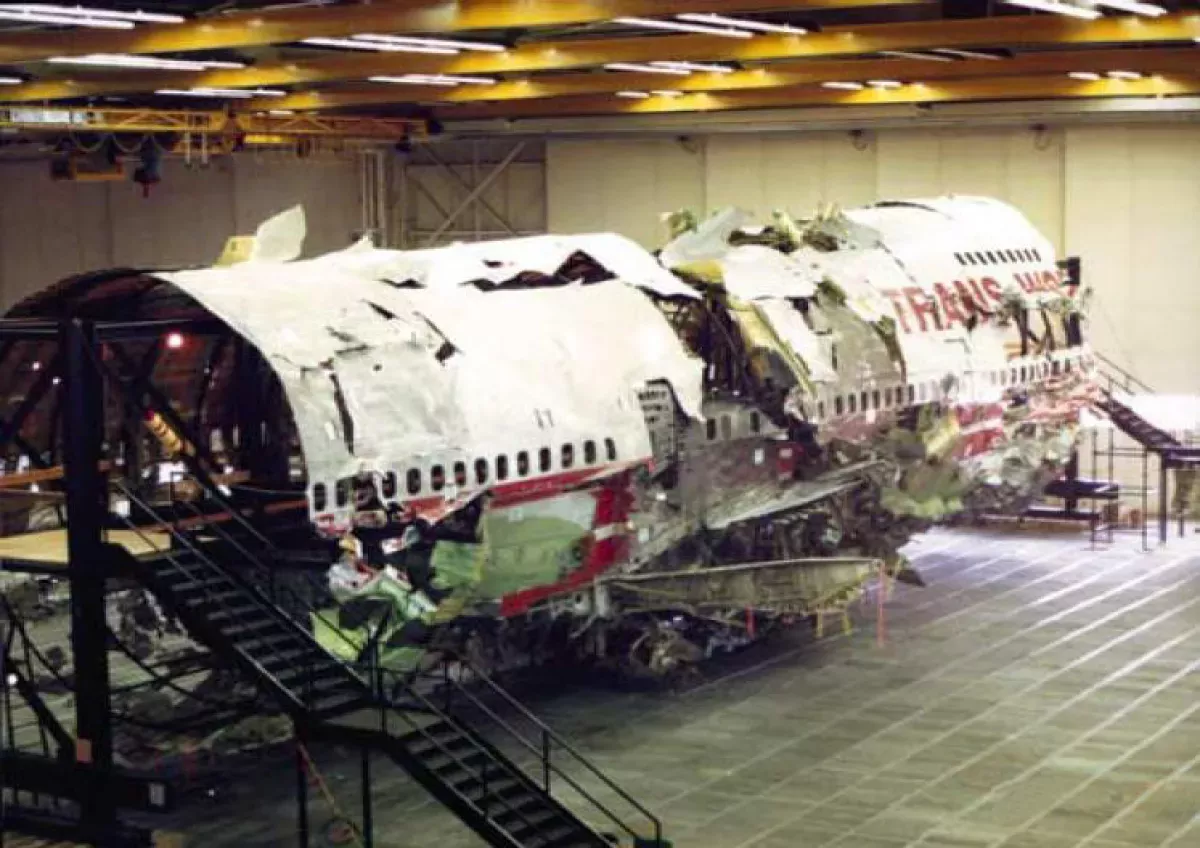TWA Flight 800, a Boeing 747, tragically exploded and crashed into the Atlantic Ocean shortly after takeoff from JFK Airport on July 17, 1996. The flight was en route to Rome with a planned stopover in Paris. The disaster resulted in the loss of all 230 passengers and crew members.
December 17, 1963: CAB Safety Recommendation
On December 17, 1963, nine days after the crash of Pan Am Flight 214, the Civil Aeronautics Board Bureau of Safety issued a recommendation for a similar rule requiring inert gas in fuel tanks.
July 1971: Manufacturing of TWA Flight 800 Aircraft
The Boeing 747-131 that would later become known as TWA Flight 800 was manufactured in July 1971. Originally intended for Eastern Air Lines, the aircraft was purchased new by TWA after Eastern canceled its order.
1976: Similar Fuel Tank Explosion
The investigation into the TWA Flight 800 crash considered a similar incident in 1976 when a 747 near Madrid was destroyed by a fuel tank explosion. The damage found in Flight 800's fuel quantity indication system (FQIS) was similar to the ignition source in the 1976 incident.
1991: Potential Explosive Residue Contamination Investigated
The NTSB investigated the possibility of explosive residue found on the wreckage being related to the aircraft's prior use in military operations, including the 1991 Gulf War. However, testing showed that such residue would have dissipated after two days in seawater, leading the NTSB to conclude that the residue likely originated from recovery operations.
July 17, 1996: TWA Flight 800 Crash
On July 17, 1996, TWA Flight 800, a Boeing 747-100, exploded and crashed into the Atlantic Ocean shortly after taking off from John F. Kennedy International Airport. The flight was en route to Rome with a stopover in Paris.
November 1996: FBI Agrees to Limited NTSB Witness Access
In November 1996, following initial concerns about witness access, the FBI agreed to provide the NTSB with redacted summaries of witness accounts and allow a limited number of witness interviews.
November 1996: NTSB Forms Witness Group
In November 1996, the NTSB formed a witness group to thoroughly examine witness accounts of the TWA Flight 800 crash.
1996: Aviation Disaster Family Assistance Act Passed
Following the TWA Flight 800 and ValuJet Flight 592 crashes in 1996, Congress passed the Aviation Disaster Family Assistance Act, improving support for families of crash victims and giving the NTSB responsibility for coordinating services.
1996: Internet Usage Soars After TWA Flight 800 Crash
The TWA Flight 800 crash in 1996 led to record-breaking internet traffic as people sought information about the incident. CNN and The New York Times experienced significant increases in viewership.
April 1997: NTSB Interviews Military Crew Members
Between November 1996 and April 1997, the NTSB interviewed crew members from a New York Air National Guard helicopter and C-130 airplane, and a U.S. Navy P-3 airplane that were flying near TWA 800 at the time of the incident.
August 1997: Fuel Tank Explosion Simulation
In August 1997, tests were conducted using a retired Air France 747 to simulate a fuel-air explosion in the central wing tank. The tests demonstrated that such an explosion could destroy an aircraft.
February 1998: FBI Grants Full Access to Witness Summaries
In February 1998, the FBI granted the NTSB full access to the summaries of witness statements collected during their investigation. Despite gaining access, the NTSB decided against re-interviewing witnesses due to the significant time elapsed.
April 1998: FBI Releases Witness Identities to NTSB
In April 1998, the FBI released the identities of witnesses interviewed during the TWA Flight 800 investigation to the NTSB. However, the NTSB decided to rely on original FBI documents instead of re-interviewing witnesses due to the elapsed time.
1999: NTSB Reviews Radar Data
The NTSB reviewed radar data from the time of the crash and determined that a 30-knot target track observed near the crash site was consistent with normal maritime traffic and not likely to have witnessed the event.
April 2000: Missile Visibility Tests Conducted
In April 2000, the NTSB carried out missile visibility tests to address claims suggesting a missile strike. The tests aimed to determine what witnesses would have observed if a missile had been involved.
August 23, 2000: NTSB Releases Final Report on TWA Flight 800 Crash
On August 23, 2000, the NTSB concluded its four-year investigation into the TWA Flight 800 crash. The report determined that the probable cause of the accident was an explosion of flammable fuel vapors in the center fuel tank, likely ignited by a short circuit.
2000: NTSB Jurisdiction Clarified
In 2000, the law was amended to clarify the NTSB's jurisdiction in aviation accident investigations, prioritizing their role over other federal agencies, including the FBI. This was a direct result of the TWA Flight 800 investigation, where jurisdictional issues arose.
July 14, 2004: TWA Flight 800 International Memorial Dedicated
A memorial dedicated to the victims of TWA Flight 800 was inaugurated at Smith Point County Park in Shirley, New York, on July 14, 2004.
2005: NTSB and FBI Establish Memorandum of Understanding
In 2005, a formal agreement between the NTSB and FBI clarified the NTSB's primary role in immediate accident investigations while allowing the FBI to conduct criminal investigations in coordination. This improved interagency collaboration after the TWA Flight 800 experience.
July 2006: Lighthouse Statue Added to Memorial
In July 2006, a lighthouse statue was added to the TWA Flight 800 memorial, symbolizing hope and remembrance.
July 18, 2008: New Fuel Tank Safety Rule Announced
On July 18, 2008, a new rule was announced requiring airlines to use inert gas in fuel tanks to prevent explosions, a measure prompted by the TWA Flight 800 crash.
June 19, 2013: NTSB Receives Petition for Reconsideration
On June 19, 2013, the NTSB received a petition to reconsider its investigation into the TWA Flight 800 crash.
2014: NTSB Denies Petition to Reopen Investigation
In 2014, the NTSB denied a petition to reopen the TWA Flight 800 investigation, stating that the evidence presented did not invalidate their original findings.
July 2021: Decision Made to Destroy TWA Flight 800 Wreckage
Due to the NTSB's decision not to renew the lease for the hangar storing the TWA Flight 800 wreckage, it was decided to decommission and destroy the wreckage in July 2021.
2021: TWA Flight 800 Wreckage Deemed Obsolete for Training
By 2021, the methods taught using the wreckage were no longer relevant to modern accident investigations, which heavily relied on new technologies.
2021: TWA Flight 800 Wreckage Decommissioned
The reconstructed wreckage of TWA Flight 800, used for training accident investigators, was decommissioned in 2021.
June 2023: TWA Flight 800 Wreckage Destroyed
The TWA Flight 800 wreckage, housed in Ashburn, Virginia, was destroyed in June 2023, concluding a chapter in aviation history.
Mentioned in this timeline

John F Kennedy JFK was the th U S President...

Radar is a radiodetermination system using radio waves to detect...
CNN Cable News Network is a multinational news organization founded...

The Boeing Company is a multinational corporation and one of...

A tank is an armored fighting vehicle designed for front-line...
Virginia officially the Commonwealth of Virginia is a state located...
Trending

20 days ago Dylan Dreyer's Grandmother's 'The Price Is Right' appearance resurfaces from 1963, gaining attention.
Hugo Gaston is a French professional tennis player known for his achievements in both singles and doubles He reached a...

6 months ago Kanye West Abruptly Ends Piers Morgan Interview After Heated Exchange Over Social Media
2 hours ago Sacramento Weather: Haze, Sunshine, Showers This Week; Rain Expected Midweek
Xolo Maridue a born Ramario Xolo Ramirez is an American actor recognized for his roles as a child actor He...

5 months ago Dakota Fanning styles Bottega bag and stars in creepy horror movie.
Popular

Chuck Schumer is the senior United States Senator from New...

Gavin Newsom is an American politician and businessman currently serving...

William Franklin Graham III commonly known as Franklin Graham is...

Zohran Kwame Mamdani is an American politician currently serving as...

Candace Owens is an American political commentator and author known...
Abigail Spanberger is an American politician who served as the...
